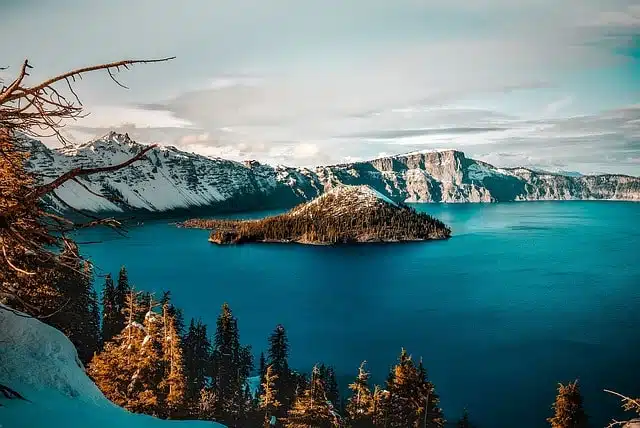Are you looking for the cleanest lakes in the United States? We’ve done the 7 Most Leech-Infested Lakes In The United States now; let’s do the Cleanest!
From the crystal-clear waters of Crater Lake in Oregon to the majestic Great Lakes of the Midwest, there are many stunning lakes to explore in this country. While all lakes are special in their way, some stand out as being particularly clean and pristine.
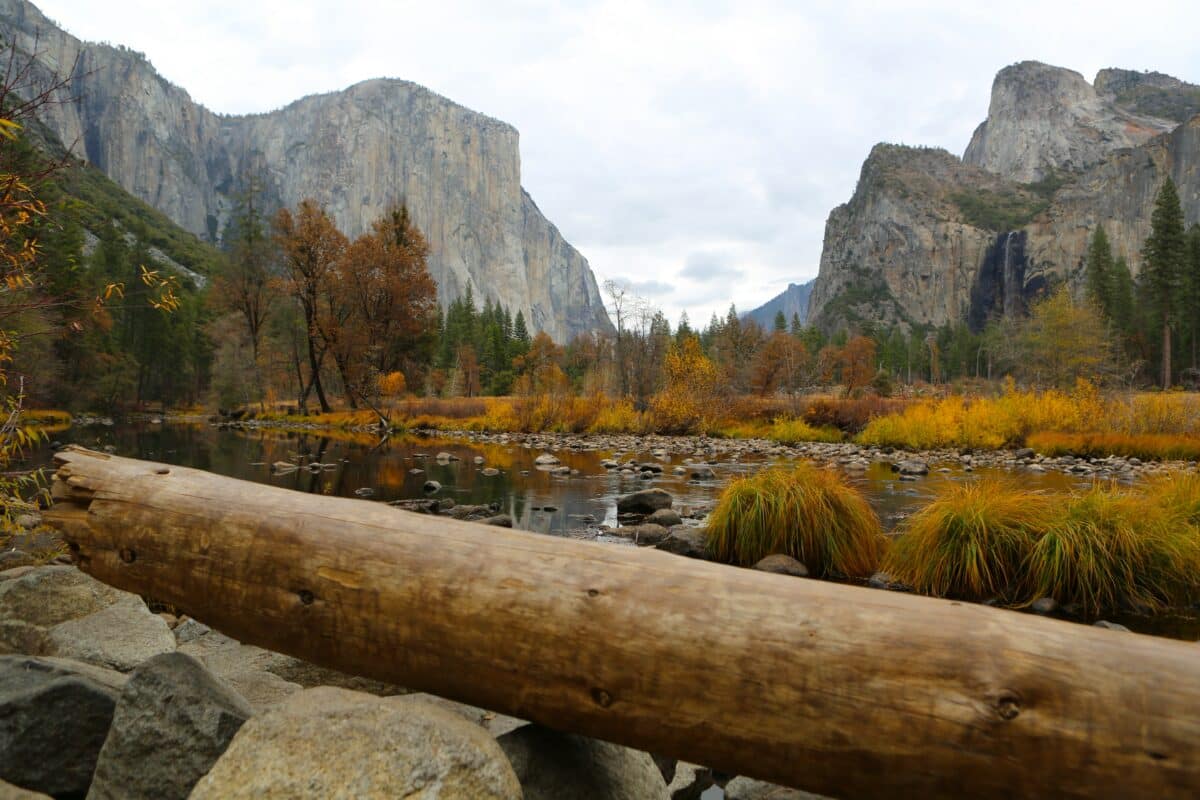
Lakes are a big part of our land and the primary source of drinking water for millions of people worldwide. Keeping lakes clean is, therefore, a matter of public health and should be a top priority. This article will look at the cleanest lakes in the United States, but you can explore the most beutiful with another one of our articles.
In the United States, there are efforts to keep lakes clean, and one such program is the Lake Assessment Program (LAP), run by the EPA, which measures the cleanliness status of 304 lakes across the country each year.
“Grand Lake St. Marys is a natural treasure, and we are incredibly proud that it has been named the cleanest lake in the country,”
Ohio State Rep
For the third consecutive year, Grand Lake St. Marys in western Ohio has been named the cleanest lake in the United States by the Lake Friendly Foundation. They are an advocacy group whose mission is to improve the quality of lakes and rivers.
“I’m committed to protecting this jewel, and I will continue to work with my colleagues in the General Assembly to secure the resources necessary to preserve and protect it.”
Robert Sprague, who represents the area in the Ohio House of Representatives.
Let’s learn more about the importance of the lakes and which are the cleanest lakes in the United States.
Key Points
| Lake | Location | Description |
|---|---|---|
| Lake Tahoe | California/Nevada | Known for its crystal-clear waters, Lake Tahoe is one of the cleanest lakes globally, with a visibility of over 70%. Fed by freshwater from Sierra Nevada. |
| Crater Lake | Oregon | This lake is incredibly clean and clear, with no rivers or streams running through it. Fed primarily by rain and snowmelt, making it pristine. |
| Lake George | New York | Lake George offers crystal-clear water with stunning scenery. Despite some concerns, the majority of the lake is clean and safe for recreation. |
| Flathead Lake | Montana | Surrounded by mountains and with a clear water surface, Flathead Lake is a paradise for water sports enthusiasts and maintains excellent water quality. |
| Lake Chelan | Washington | Known for its clear water and stunning views, Lake Chelan is one of the cleanest lakes in the United States. |
| Lake Coeur d’Alene | Idaho | While there have been concerns about cleanliness, Lake Coeur d’Alene still maintains overall clean water, making it an attractive destination. |
| Lake Michigan | Illinois/Indiana | As one of the Great Lakes, Lake Michigan is a vital resource for the Midwest. Efforts are made to protect it from pollution and ensure water quality. |
| Newfound Lake | New Hampshire | Known for its clear water and stunning views, Newfound Lake is celebrated for its pristine condition and recreational opportunities. |
| Torch Lake | Michigan | Part of the Chain of Lakes, Torch Lake’s cool and refreshing water is a popular destination for swimming and boating. |
| Deer Lake | Minnesota | A secluded lake known for its clear and clean water, Deer Lake offers a beautiful and refreshing environment for visitors. |
The Top 10 Cleanest Lakes in the United States
The U.S. is considered home to some of the cleanest lakes in the world. Many of the lakes in the U.S. are so clean that they are used for drinking water, and sport a variety of animals! Read all about 10 Animals That Live in Lakes!
Here are 10 of the cleanest lakes in the United States, perfect for a refreshing swim or a leisurely paddle.
Note: as these rankings often change the list is in no particular order
Lake Tahoe
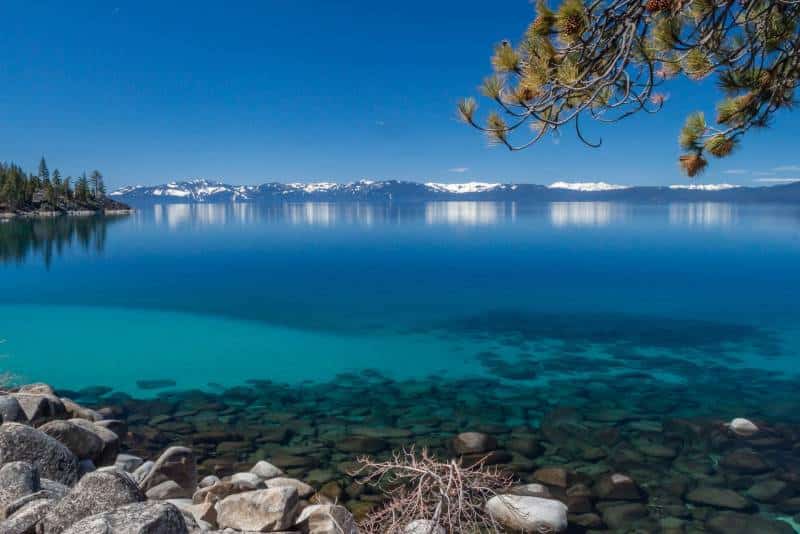
It is number on the list of the cleanest lakes not only in the U.S., but also the whole world. You can see the bottom of over 70% of the lake. The lake is also very deep, with an average depth of around 1,000 feet. It means there is a large volume of water contained in the lake, which helps to keep it clean.
Various things contribute to the cleanliness of Lake Tahoe. One is that it is located in a mountain area, so there is very little pollution that can blow into the lake.
Another is that the lake is constantly being fed by fresh water from the Sierra Nevada mountains. This freshwater helps to keep the lake clean and clear.
Lake Tahoe is a beautiful place to visit, and a great choice if you are looking for a place to swim, boat, or just simply enjoy the scenery.
Crater Lake
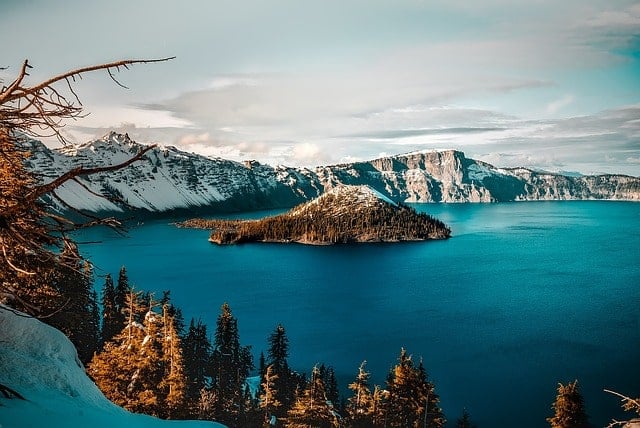
This lake is located in Oregon, in the United States, and is fed primarily by rain and snowmelt. No streams or rivers run through the lake, so the only way for pollutants to enter the lake is through precipitation.
Because of this, the water in Crater Lake is incredibly clean and clear. It is so clear that the bottom of the lake can be seen from the surface.
Lake George
Lake George is one of the most mesmerizing lakes in the world and one of the cleanest. The water of the lake looks crystal clear, and the scenery is thoroughly stunning. It’s no wonder many people come here to enjoy the outdoors.
However, people are concerned about the cleanliness of the lake. While it’s true that there are some areas where the water is not as clean as it could be, overall, the lake is still quite clean. The vast majority of the lake is clean and safe for swimming, boating, and fishing.
So, if you’re looking for a beautiful and clean lake to enjoy, Lake George is a great choice. We should take some precautions to protect the lake to ensure that people can continue to have safe and enjoyable experiences.
Flathead Lake
It is the biggest natural freshwater lake in the Western United States. It is located in northwestern Montana and is east of the Flathead River.
The lake is over 200 square miles and on average, the lake’s depth is about 150 feet, but it has a maximum depth of almost 400 feet.
The water in Flathead Lake is very clean. Several rivers are fed by this lake, including the Flathead River, one of the cleanest rivers in the United States. The water in the lake is also constantly being refreshed by a natural process called convection.
Convection occurs when the warm water in the lake rises to the surface and is replaced by colder, deeper water. This process helps to keep the water in the lake clean and clear.
Lake Chelan

Lake Chelan is a beautiful, clear lake located in Washington State. It is well known for its clean water and is often considered one of the cleanest lakes in the United States. It is approximately 50 miles long and nearly 1,500 feet deep, making it one of the deepest lakes in the country.
Lake Chelan is home to various fish, including rainbow trout, kokanee salmon, and bass. The lake is also popular for swimming, boating, and camping destinations.
Lake Coeur d’Alene
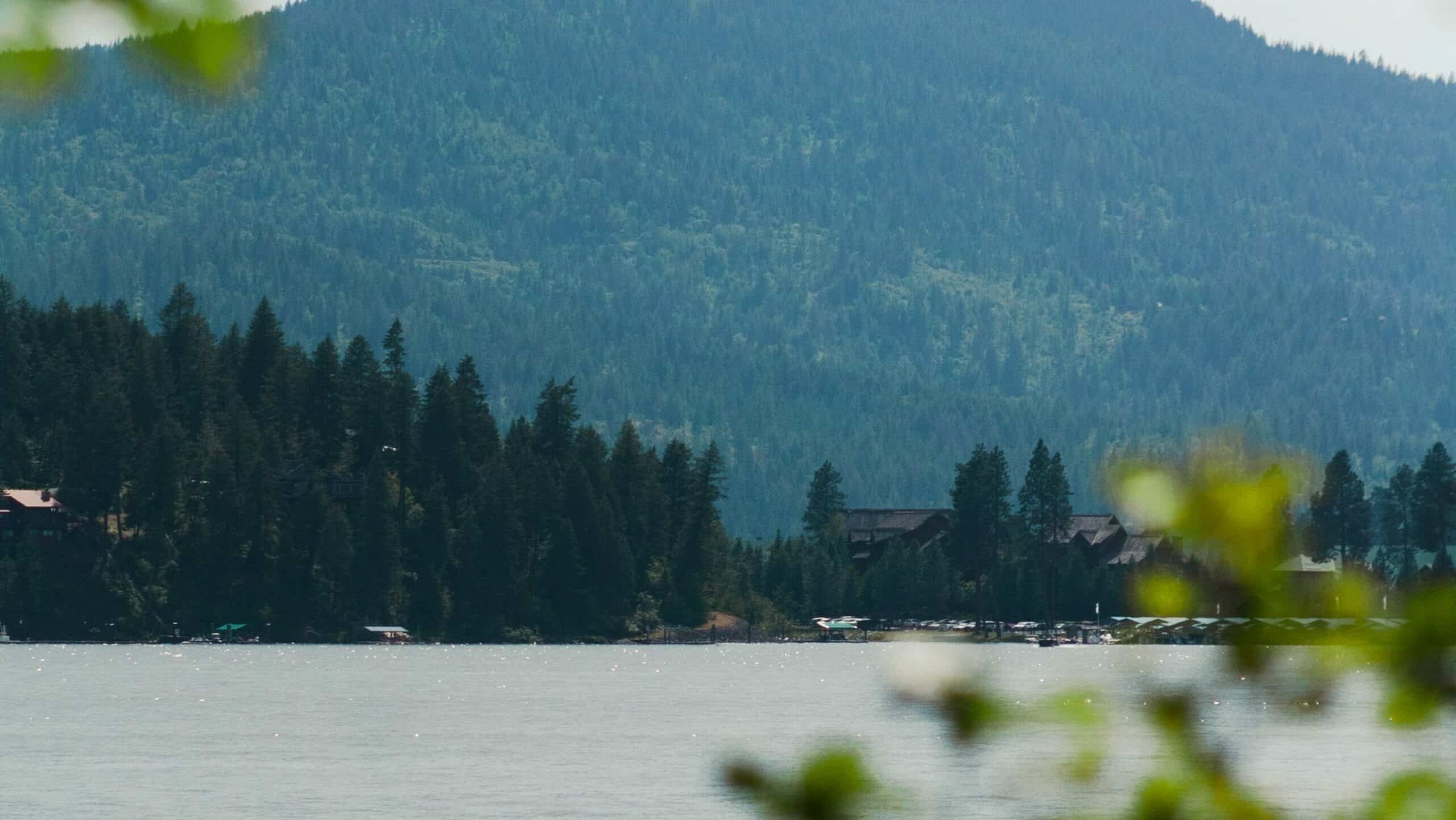
Lake Coeur d’Alene is a beautiful lake in Idaho, likewise known for being one of the cleanest lakes in the country. The lake water is crystal clear and you can see the bottom in many places, and the scenery is stunning.
However, people have been concerned about the lake’s cleanliness recently. There have been reports of trash and sewage floating in the water, and the lake has been closed for swimming on multiple occasions due to high levels of bacteria.
Despite these concerns, Lake Coeur d’Alene is still a beautiful place to visit, and it’s important to remember that the lake is much cleaner than it was just a few decades ago. People can keep the lakes clean for future generations to enjoy with just a small amount of effort.
Lake Michigan
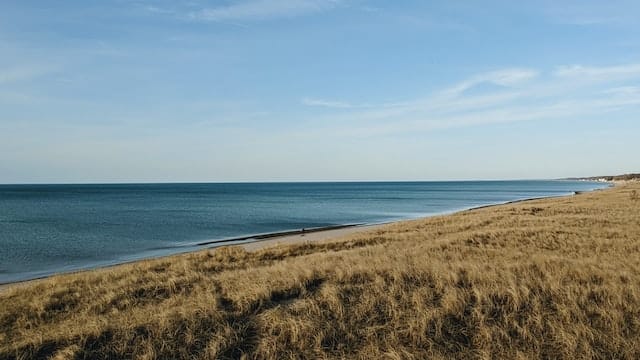
It is the fifth number of the five Great Lakes of North America: it is the third-largest lake by surface area and the fifth-largest lake by volume. It is the only Great Lake contained solely to the United States; the others are all shared with Canada.
Lake Michigan is bordered by the states of Michigan, Indiana, Illinois, and Wisconsin. Lake Michigan is home to various fish, including salmon, trout, and perch. As a result, the lake supports a thriving fishing industry.
However, the lake is not immune to pollution. Recently, many questions have been raised about Lake Michigan’s water quality.
A range of factors contributes to water pollution in Lake Michigan. One is the discharge of sewage and other wastes from municipal and industrial sources. Another is the runoff of pollutants from agricultural land, which include fertilizers, pesticides, and animal waste.
Lake Michigan is an important resource for the people of the Midwest. It is essential to the region’s economy and ecology. It is essential that we take steps to protect the lake from pollution.
Newfound Lake
Newfound lake is a beautiful body of water located in New Hampshire. It is the cleanest lake in the United States and is known for its clear water and stunning views. Visitors of the lake often comment on how clean it is and how they feel like they can see right to the bottom.
It is fed by several springs and is home to various fish and other wildlife. It is a favored spot for swimming, fishing, and kayaking – a popular destination for locals and tourists alike.
While the lake is very clean, there is always room for improvement. The Newfound Lake Association works hard to keep the lake clean and protect its natural resources.
Throughout the year, various events and programs are held to educate the public about the importance of lake conservation.
Attend one of these events, where you can learn more about the issue and how you can help make a difference. Other ways to get involved include volunteering with a local organization or becoming a member of a local group dedicated to protecting and restoring lakes.
Torch Lake
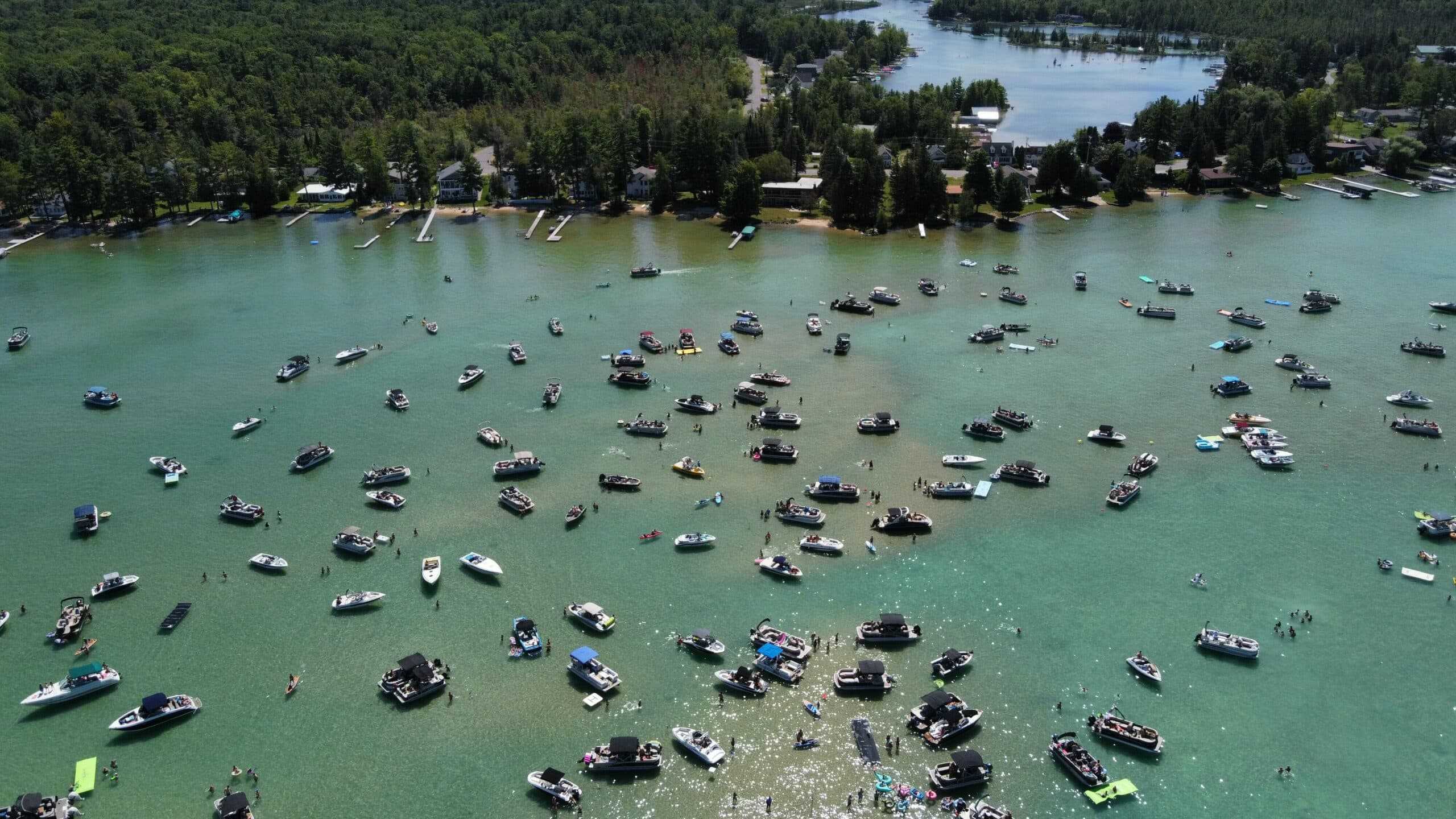
This lake is located in northern Michigan and is part of the Chain of Lakes. It is over 3 miles long and very deep, and it is a popular destination for swimming, fishing, and boating.
The water in Torch Lake is clean and clear. There is very little pollution or sediment in the lake, and the bottom is visible in most places. The water is cool and refreshing in the summer. Torch Lake is one of the few lakes in Michigan that is not polluted.
Deer Lake, Minnesota
Deer Lake is a beautiful, secluded lake in Minnesota known for its clear, clean water. Visitors to the Lake often comment on how clear and clean the water is and how refreshing and invigorating it is to swim in.
So, how clean is Deer Lake? The water is exceptionally clean and clear and safe to swim in. The fish are also healthy and plentiful.
There are no major pollution problems in the lake although there is some concern about potential runoff from nearby farms and fields. Overall, Deer Lake is a beautiful, clean lake worth visiting.
Each of these lakes is incredibly clean and clear, and they are all great places to visit if you want to enjoy some time in nature.
How Do Clean Lakes Affect Our Health?
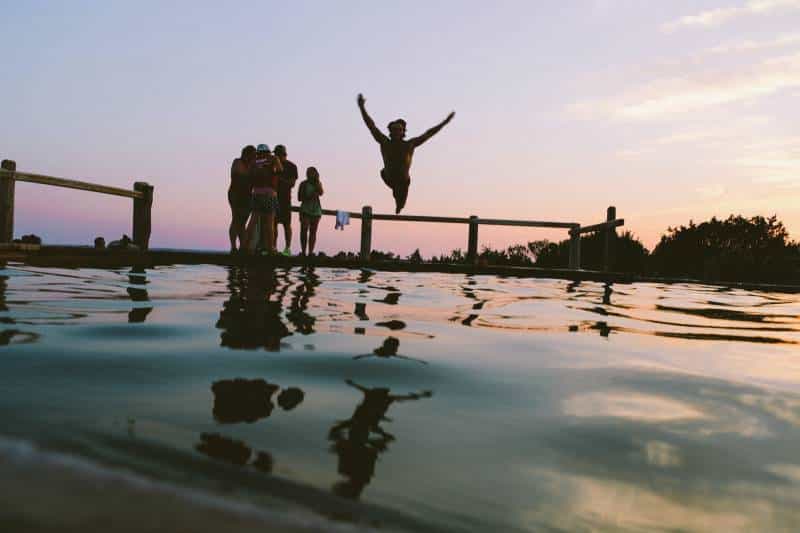
Lakes that are clean and free of pollutants are more aesthetically pleasing and positively affect our health. We are exposed to fewer harmful chemicals and bacteria when swimming, fishing, or drinking from a clean lake. It improves physical and mental health and decreases disease risk.
In addition, clean lakes are important for the health of the ecosystem. Lakes provide a habitat for fish and other aquatic creatures and help purify the water flowing into them. In turn, it also benefits the animals and plants that rely on that water for survival.
Clean lakes are essential for a healthy environment and a healthy population. We must do our part to protect them.
How Are Clean Lakes Important to the Environment?

Lakes are essential to our environment not only due to providing habitat and purifying water but also play a vital role in recreation, tourism, and industry.
Lakes are generally cleaning agents. They receive water from rivers and streams, which carry pollutants from the land. The pollutants are then trapped in the sediment at the bottom of the lake. Over time, the sediment traps more and more pollutants, and the lake becomes cleaner and cleaner.
Nonetheless, lakes can also become polluted. It can happen when there is an excessive amount of nutrients in the water, which can cause algae blooms. When Algae blooms, it depletes the oxygen in the water, leading to the death of fish and other aquatic animals.
It is important to keep lakes clean to protect the environment. When lakes are polluted, it will damage the entire ecosystem.
How do you Clean Lakes?

Lakes are key components of any ecosystem, providing habitat for fish, wildlife, and plants. They also provide recreational opportunities for people. Cleaning lakes is important for the health of the ecosystem and the people who make use the lake.
Some different ways to clean lakes:
● Physically Remove the Debris
One way is to physically remove the debris from the lake bottom. You can also do it with a rake or a net.
● Use Chemicals
Another way is to use chemicals to remove the debris, and it is usually done with a chlorine solution.
● Use Natural Methods
The third way is to use a natural method, such as introducing bacteria that eat the debris.
Which method is used depends on the size of the lake and the amount of debris. For cleaning small lakes, use a rake or a net method, whereas large lakes may need to be cleaned with a combination of methods.
How do Cleaning Lakes Benefit the Community?
Cleaning lakes benefits the community in many ways. First, it helps to improve the water quality for everyone who uses the lake. It is important for people who use the lake for swimming, fishing, and other activities.
Second, it can help improve the lake’s appearance, making it more enjoyable for everyone. Third, it can help to reduce the amount of pollution and debris in the lake, making it a safe place for all – humans and animals alike.
Why are Our Lakes Polluted?
There are many reasons why our lakes are polluted. One reason is that we have not been managing our waste properly. We have been dumping our sewage and industrial waste into our lakes without proper treatment, leading to the unnecessary pollution of our lakes.
Another reason for the pollution of our lakes is the use of fertilizers and pesticides in agriculture. These chemicals have seeped into our lakes, polluting the water. Moreover, burning fossil fuels has also contributed to the pollution of our lakes.
The emissions from cars and factories have been deposited into our lakes, making the water dirty and unsuitable for swimming. All of these reasons have led to the pollution of our lakes. We must take action to clean up our lakes and make them safe for everyone to enjoy.
What Should You do?
As an individual, you definitely have the potential to make the world a better place. You can start by doing things to help reduce your impact on the environment, such as recycling, conserving energy, and reducing your consumption of resources.
You can also get involved in causes that you are passionate about, whether it is fighting for social justice, protecting the environment, or working to end poverty.
People can find a cause that aligns with their interests and values. You can also be kind and compassionate to those around you and work to make your community a better place.
Every little step helps, and you can be part of the solution by doing your part and having the cleanest lakes in the United States.
Conclusion on the cleanest lakes in the United States
It is absolutely necessary to keep our beautiful lakes clean by not polluting them. There are many ways to clean lakes: introduce legislation to ban polluting products, encourage local governments to build more toilets, recycle more, and encourage everyone to pick up litter.
Many people enjoy camping, hiking, fishing, and other water activities. However, finding a good swimming place can sometimes be difficult. With all the water pollution these days, it can be hard to know where you can go to enjoy a swim without worry.
However, this list of the cleanest lakes in the United States from the EPA has the most up-to-date information and is a great place to start.
Thank you for reading this article! Plan your next trip with our article on The Best Lakes to Camp in The United States. If you would like to learn more about the incredible geography of the United States, look at our post on the Fastest Rivers in the United States.
Frequently Asked Questions (FAQs)
Crater Lake in Oregon is often considered the cleanest lake in America, known for its pristine and crystal-clear waters.
Lake Tahoe is renowned for having exceptionally clean water and is known for its stunningly clear blue waters.
Crater Lake in Oregon is often regarded as one of the freshest lakes in the US due to its purity and lack of inlets or outlets.
Lake Tahoe is exceptionally clear due to its location in a mountainous area with minimal pollution sources, granite-based rocks and soil that produce little sediment, and its depth and constant circulation that help maintain its clarity.
Swimming in Lake Tahoe is generally safe and enjoyable due to its clean water and scenic beauty.
- The Most Adorable Footage of Baby Wolves in Minnesota - April 15, 2024
- Man Teaches Bald Eagle to Play Fetch - April 15, 2024
- Mother Buffalo Tries to Save Baby From Komodo Dragons - April 14, 2024

